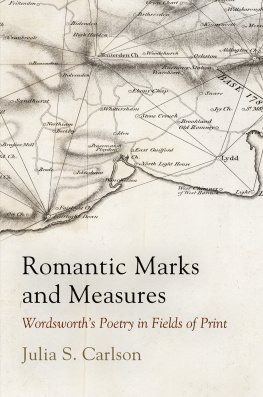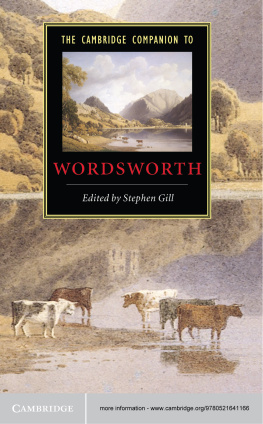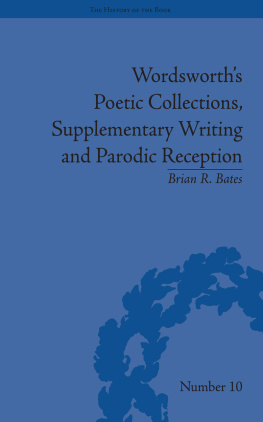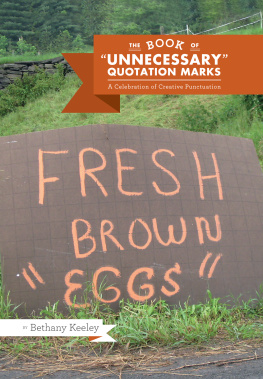Contents
Page List
Guide

Romantic Marks and Measures
MATERIAL TEXTS
Series Editors
Roger Chartier | Leah Price |
Joseph Farrell | Peter Stallybrass |
Anthony Grafton | Michael F. Suarez, S.J. |
A complete list of books in the series is available from the publisher.
Romantic Marks and Measures

Wordsworths Poetry in Fields of Print
Julia S. Carlson

UNIVERSITY OF PENNSYLVANIA PRESS
PHILADELPHIA
Copyright 2016 University of Pennsylvania Press
All rights reserved. Except for brief quotations used for purposes of review or scholarly citation, none of this book may be reproduced in any form by any means without written permission from the publisher.
Published by
University of Pennsylvania Press
Philadelphia, Pennsylvania 191044112
www.upenn.edu/pennpress
Printed in the United States of America on acid-free paper
1 3 5 7 9 10 8 6 4 2
Cataloging-in-Publication Data for this book is available from the Library of Congress.
ISBN 978-0-8122-4787-9
For my parents
Even though we navigate daily through a perceptual world of three spatial dimensions and reason occasionally about higher dimensional arenas with mathematical ease, the world portrayed on our information displays is caught up in the two-dimensionality of the endless flatlands of paper and video screen. Escaping this flatland is the essential task of envisioning informationfor all the interesting worlds (physical, biological, imaginary, human) that we seek to understand are inevitably and happily multivariate in nature. Not flatlands. Even our language, like our paper, often lacks immediate capacity to communicate a sense of dimensional complexity.
Edward Tufte, Envisioning Information
I have the whole punctuation to settle; which in blank-verse is of the last importance, and of a species, peculiar to that composition; for I know no use of points, unless to direct the voice, the management of which, in the reading of blank-verse, being more difficult than in the reading of any other poetry, requires perpetual hints, and notices, to regulate the inflexions, cadences and pauses. This however is an affair, that in spite of grammarians, must be left pretty much ad libitum scriptoris [to the discretion of the writer]. For (I suppose) every author points according to his own reading.
William Cowper to William Unwin, 2 October 1784
A British man, speaking French discovers his country as much by the emphasis he lays upon particular syllables, as by any other mark.
James Burnett Monboddo, Of the Origin and Progress of Language
Contents

Illustrations

Abbreviations

1799 | William Wordsworth, The Prelude, 17981799, ed. Stephen Parrish (Ithaca: Cornell University Press, 1977) |
1805 | William Wordsworth, The Thirteen-Book Prelude, ed. Mark L. Reed, 2 vols. (Ithaca: Cornell University Press, 1991). All citations are from volume I unless otherwise stated. |
1850 | William Wordsworth, The Fourteen-Book Prelude, ed. W. J. B. Owen (Ithaca: Cornell University Press, 1985) |
BL | Samuel Taylor Coleridge, Biographia Literaria, ed. James Engell and W. Jackson Bate, 2 vols. (Princeton: Princeton University Press, 1983) |
CL | Collected Letters of Samuel Taylor Coleridge, ed. E. L. Griggs, 6 vols. (Oxford: Clarendon Press, 195671) |
Excursion | William Wordsworth, The Excursion, ed. Sally Bushell, James A. Butler, and Michael Jaye (Ithaca: Cornell University Press, 2007). Internal quotation marks are supplied for speech in block quotations and where relevant to argument. |
EY | The Letters of William and Dorothy Wordsworth: The Early Years, 17871805, 2nd ed., ed. Ernest De Selincourt, rev. Chester L. Shaver, 2 vols. (Oxford: Clarendon Press, 1967), vol. I |
HC | John Thelwall, Letter to Henry Cline, Esq. on Imperfect Developments of the Faculties, Mental and Moral, as well as Constitutional and Organic; and on the Treatment of Impediments of Speech (London, 1810) |
LB | Lyrical Ballads, and Other Poems, 17971800, ed. James Butler and Karen Green (Ithaca: Cornell University Press, 1992) |
PW | The Poetical Works of S. T. Coleridge, ed. J. C. C. Mays, 3 vols. (Princeton: Princeton University Press, 2001) |
W Prose | The Prose Works of William Wordsworth, ed. W. J. B. Owen and J. W. Smyser, 3 vols. (Oxford: Clarendon Press, 1974) |
Introduction
When Francis Jeffrey reviewed Thalaba in 1802, he made Robert Southeys poem a test case of all that was wrong with the new, revolutionary school of poetry. One of his strongest criticisms concerned the poems measures: Southeys predilection for experimental, unrhymed verse-forms was, he said, untraditional and un-English: Blank odes have been known in this country about as long as English sapphics and dactylics; and both have been considered, we believe, as a species of monsters, or exotics, that were not very likely to propagate, or thrive, in so unpropitious a climate.
Southeys attempt to naturalize sapphics had failed, Jeffrey asserted, and he predicted a no better fate for Thalabaa jumble of all the measures that are known in English poetry, (and a few more), without rhyme, and without any sort of regularity in their arrangement. Strange combinations exercised the mind, and rather than being repeated with any degree of uniformity were multiplied, through the whole composition, with an unfounded licence of variation. Thalabas cadences were not merely unprecedented but failed to set precedents within the poem.
Figure 1. James Gillray, New Morality; or the promisd instalment of the high-priest of the Theophilanthropes, with the homage of Leviathan and his suite (London, 1798), detail. Trustees of the British Museum. Reproduced by permission of the British Museum.
Cut away to the year 1812: another critic was printing excerpts from a Southey epic and inviting readers to discover their measure. In his Selections for the Illustration of a Course of Instruction on the Rhythmus and Utterance of the English Language, John Thelwall reproduced a passage from The Curse of Kehama (1810), extolling its beautiful variety of lyrical measure, well worthy of elocutionary analysis.












